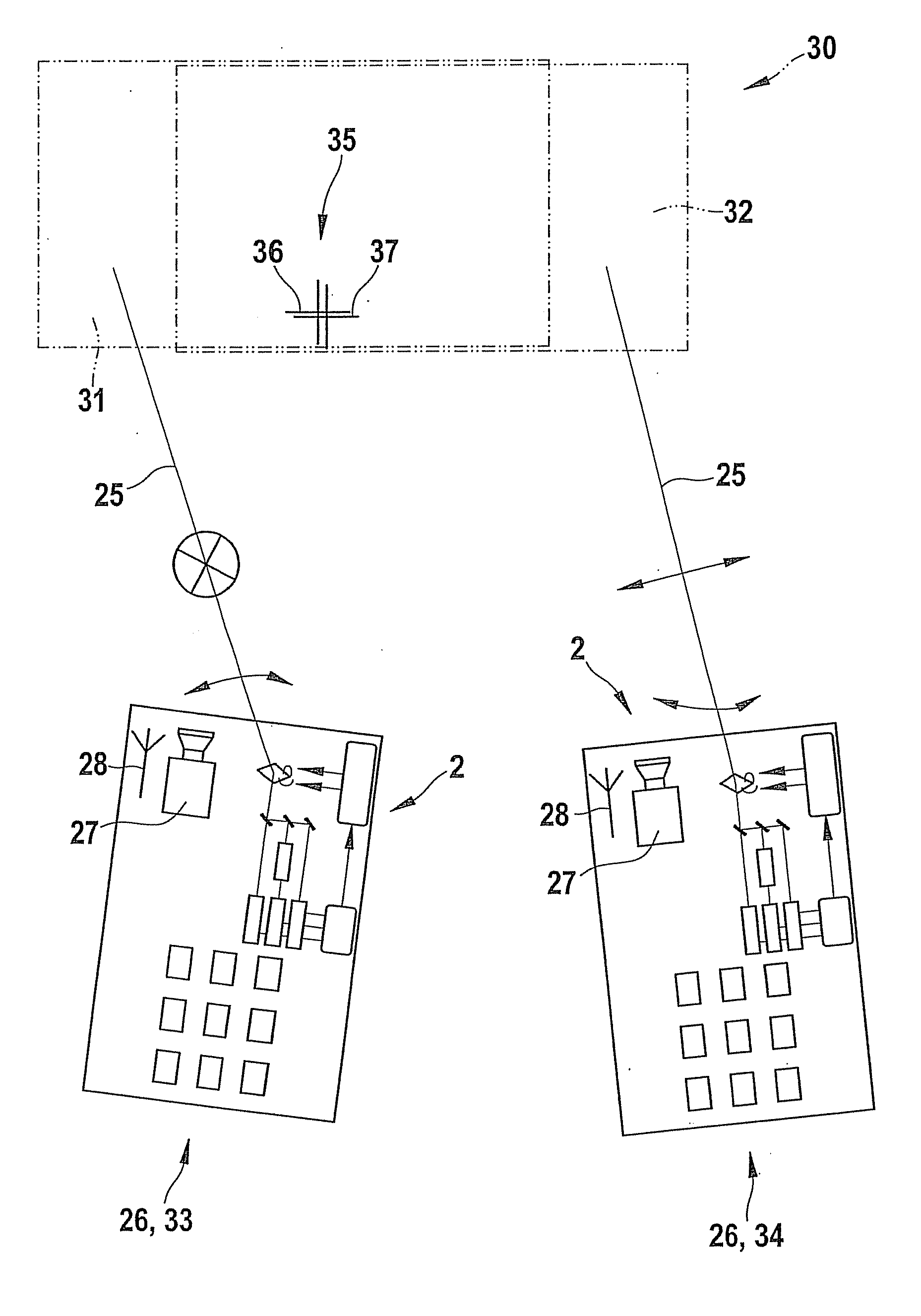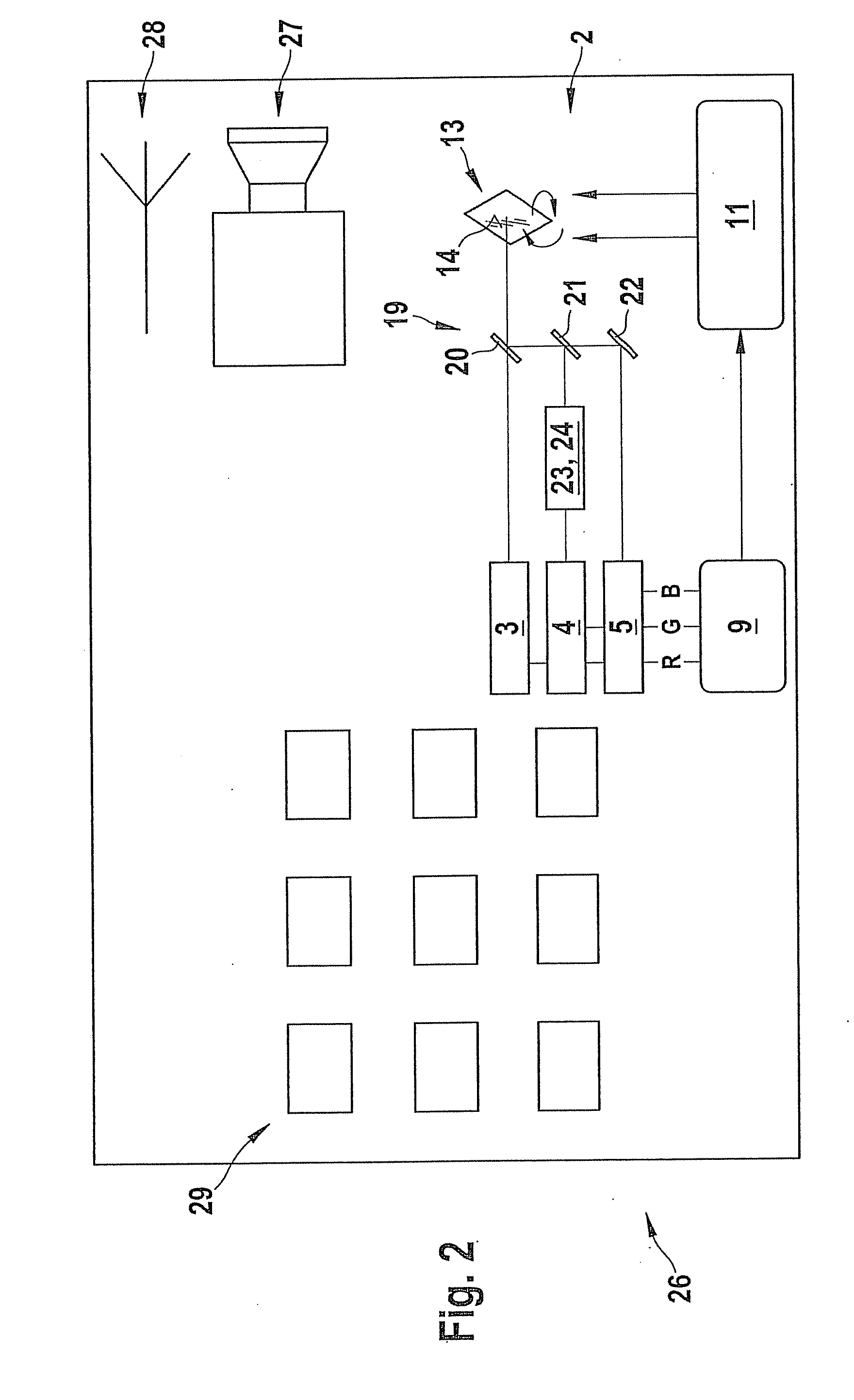Method for generating an image and a projector and a cell phone having a projector
a cell phone and projector technology, applied in the field of generating images and projectors, can solve the problems of not being portable or portable, and great limitations, and achieve the effects of convenient initial operation, convenient transportation, and easy expansion of the generated image area
- Summary
- Abstract
- Description
- Claims
- Application Information
AI Technical Summary
Benefits of technology
Problems solved by technology
Method used
Image
Examples
Embodiment Construction
[0022]FIG. 1 shows a schematic representation of a projector 1 which is designed as a laser projector 2. Laser projector 2 has a first laser 3, a second laser 4, and a third laser 5. First laser 3 generates a laser beam in the red wavelength range, second laser 4 in the infrared wavelength range, and third laser 5 in the blue wavelength range. Correspondingly, lasers 3, 4, and 5 are addressed via a first signal line 6, a second signal line 7, and a third signal line 8 which together transmit an RGB signal. Signal lines 6, 7, and 8 are connected to a video controller 9 which activates lasers 3, 4, and 5 via signal lines 6, 7, and 8. Via a further signal line 10, video controller 9 activates a scan-controller 11 which activates a biaxial scanner unit 13 via links 12. When triggered by scan-controller 11, the biaxial scanner unit may be rotated about two axes. Scanner unit 13 has a reflecting surface 14 via which incident light of lasers 3, 4, and 5 may be projected in an image plane 1...
PUM
 Login to View More
Login to View More Abstract
Description
Claims
Application Information
 Login to View More
Login to View More - R&D
- Intellectual Property
- Life Sciences
- Materials
- Tech Scout
- Unparalleled Data Quality
- Higher Quality Content
- 60% Fewer Hallucinations
Browse by: Latest US Patents, China's latest patents, Technical Efficacy Thesaurus, Application Domain, Technology Topic, Popular Technical Reports.
© 2025 PatSnap. All rights reserved.Legal|Privacy policy|Modern Slavery Act Transparency Statement|Sitemap|About US| Contact US: help@patsnap.com



